 |
 |
 |
| |
Longitudinal assessment of liver fibrosis (LF) by non-invasive methods in HIV- HCV coinfected patients, after HCV chemotherapy
|
| |
| |
Reported by jules Levin
51st International Conference Antimicrobial Agents & Chemotherapy (ICAAC)
Sep 17-21, 2011 Chicago
Carton JA1, de la Fuente B2, Collazos J3, Asensi V1
1Infectious Diseases Unit, Hospital Universitario Central de Asturias, Oviedo University School of Medicine, 2Infectious Diseases Unit, Hospital de Cabueñes, Gijon; 3Infectious Diseases Unit, Hospital de Galdacano, Vizcaya, all in Spain
Background: Anti-HCV treatment may modify liver fibrosis (LF) progression in HCV/HIV-coinfected patients, which can be measured noninvasively by elastometry (TE) and biochemical indices (BLFI).
Patients and methods: 210 HIV-HCV coinfected patients who completed at least 12 weeks of Peginterferon-Ribavirin standard therapy, were followed at 12 weeks, end of HCV therapy and 38-42 months afterwards by TE and BLFI (APRI, Forns, FIB-4 indexes) and compared with 118 patients reluctant to HCV therapy (control group). LF was assessed by biopsy (Metavir) or TE at baseline and only by TE afterwards. A combined liver stiffness stage (LSS) was made putting together both values, using as cutoffs: F2≥7.2kPa, F3≥9.4kPa, F4 ≥14kPa.
Results: 80 patients had sustained virological response (SVR) and 130 did not (UVR). There were significant differences in baseline characteristics between both groups in duration of HCV infection, RNA-HCV load and HCV genotypes distribution. Significantly higher BLFI and Metavir-TE stage were also found in the UVR group. All treated groups decreased significantly liver stiffness during therapy, which continued after treatment only in patients who achieved a SVR. A strong parallelism was observed in all BLFI used. In SVR, UVR and control groups TE suffered median variations of -29%, -5.0% and +15.4%. In 91 patients, LSS increased at the end of study corresponding to 2.5%, 33.1% and 35% of patients of SVR, UVR and control groups. Basal stage of LF < F3, non-SVR and a longer interval of evaluation were independent variables associated with progression of LF. In 58 patients LSS decreased along the follow-up, with rates of 37.5%, 16.9% and 5.1% in SVR, UVR and control groups respectively. Response to anti-HCV therapy and CD4 cells over 500/mm3 at baseline were independent significant factors associated with a decline in LSS.
Conclusions: SVR was usually followed for regression of non-invasive fibrosis markers; on the contrary UVR and HCV non-treated patients followed a poorer outcome.
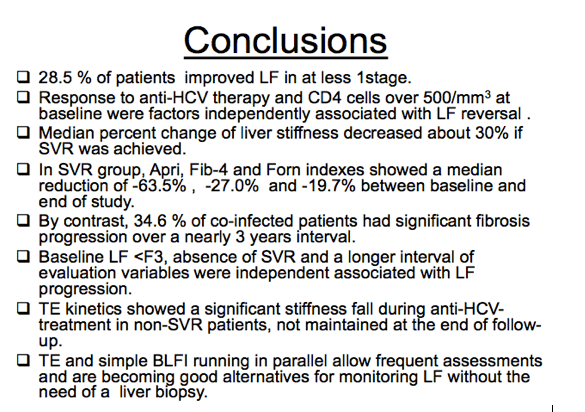
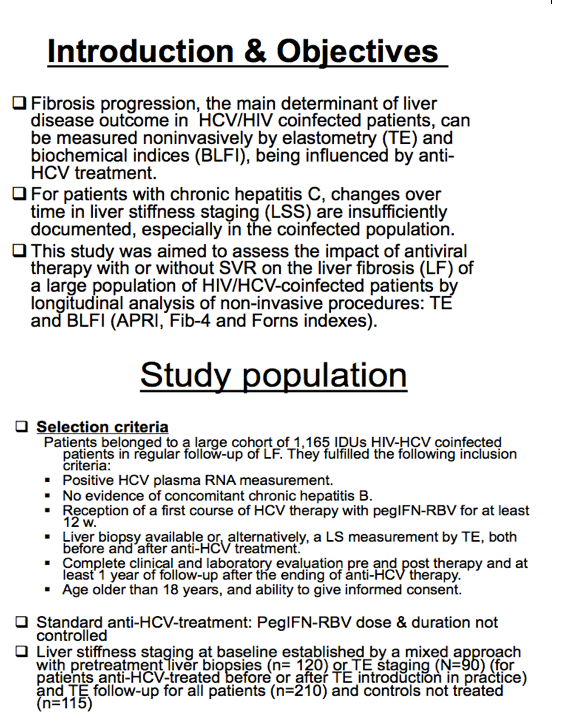
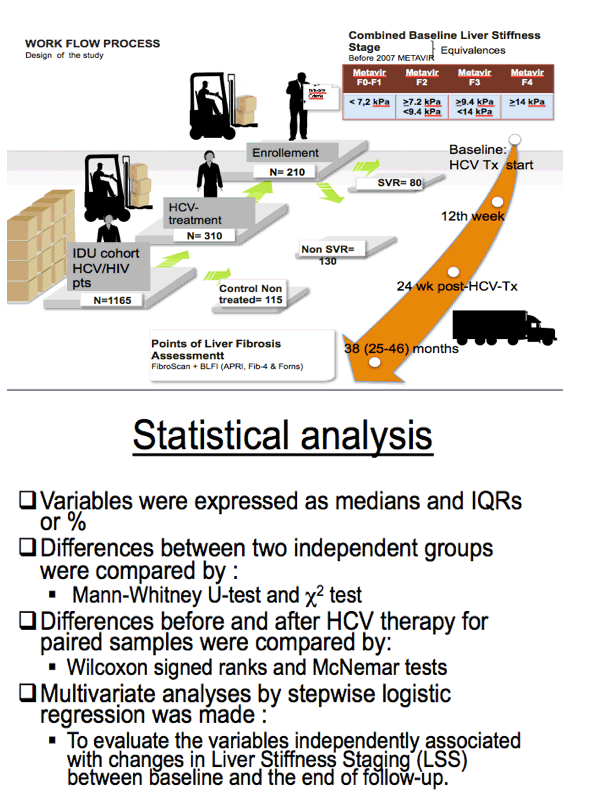
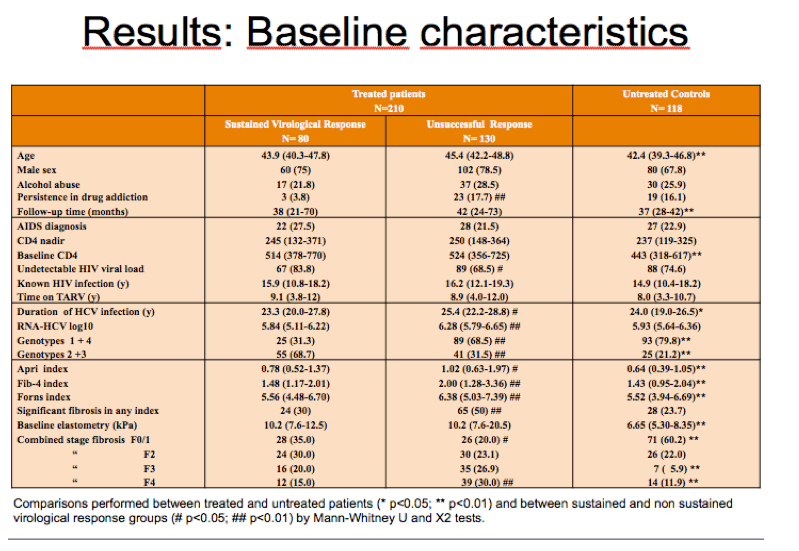
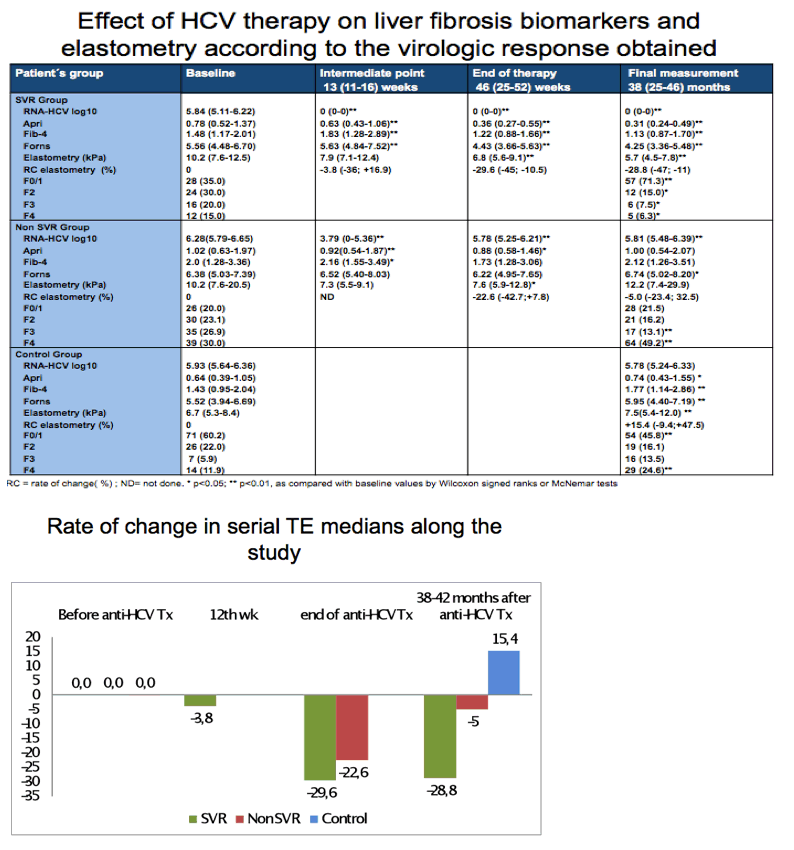

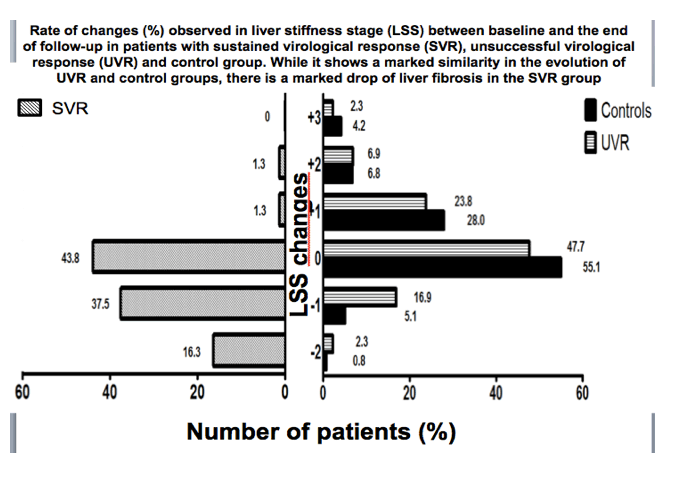
|
| |
|
 |
 |
|
|